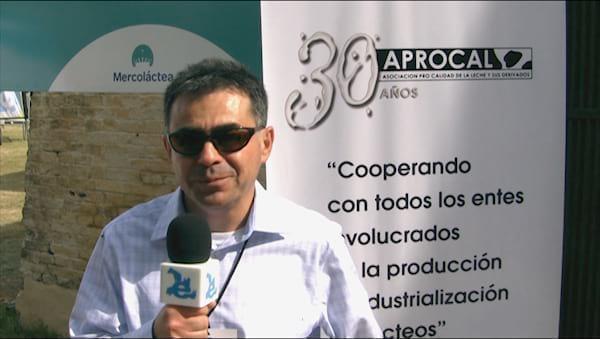Mastitis
Published: August 8, 2016
By: Phytobiotics; Anja Pastor.
First of all – what is mastitis?
Mastitis is defined as an inflammation of the mammary gland. Pathogenic microorganisms enter the udder through the teat canal, overcome the cow´s immune system and multiply in the udder. Toxins are produced that are harmful to the mammary gland. Consequently, the milk composition changes and milk yield decreases.
There are two main types of mastitis: a clinical and a subclinical form. While symptoms are seen if the clinical form is predominant - e.g. a swollen and hot udder – no clinical signs are seen for the subclinical form, making the latter one hard to identify.
Who is responsible for mastitis?
Bacteria are the main causativemicroorganisms. Major pathogens are Staphylococcus aureus, Streptococci (agalactiae, dysgalacticae, uberis), Escheria coli and Klebsiella spp.
Which animals may be affected?
Hudson et al. (2012) surveyed 80 dairy herds. In 10,096 out of 39,590 observed lactations, they found at least one clinical mastitis between the 20th and 220th day of lactation. This means, that approx. 25% of cows will suffer from clinical mastitis – while the incidence for subclinical mastitis is thought to be even higher!
Multiparous cows are generally at a higher risk of developing clinical mastitis than first-calving cows. While the risk for a clinical mastitis is highest in early lactation (Steeneveld et al., 2008), the risk for a subclinical mastitis increases with ongoing lactation. Additionally, cows with a high milk yield are more vulnerable to develop a mastitis – regardless of the form – than cows with a lower milk yield.
What are the consequences?
A clinical mastitis is combined with pain and a severely decreased well-being of the animal. For the farmer, a series of consequences will follow a mastitis: First of all: direct costs for medical treatments arise. In Sweden, a veterinarian charges on average 119€ for a clinical mastitis treatment (Nielsen, 2009). But the veterinarian costs are only the tip of the iceberg: yield loss (up to 10%; Fehlings et al., 2012), an altered milk composition, discarded milk extra labour and subsequent disorders – including decreased fertility – add to the severity of the suffered economical losses. Nielsen (2009) assumes that the average economic loss per case of clinical mastitis are 275€. For a subclinical mastitis the author states cost of about 60€ per case.
Are there indicators for a subclinical mastitis?
Bacteriological cultures of milk and the presence of pathogens herein offer a diagnostic possibility.
Nonetheless, itis not feasible as a routine test (Nielsen, 2009). The practical solution is to measure the somatic cell count (SCC) as milk always contains a certain amount of somatic cells. Normally, leukocytes dominate the somatic cells in a healthy and lactating mammary gland. If a bacterial infection occurs, neutrophils will increase dramatically as well as the total SCC. Hence, the SCC is an indicator for udder health. The lower the SCC, the better is the health status of the cow. A SCC threshold of 100,000 cells/ml is internationally accepted as safe for consumer and a SCC < 100,000 cells/ml is rewarded by the dairy industry with a quality bonus, while a SCC of 200,000 cells/ml will already lead to a decreased milk yield of 6% (Fehlings et al., 2012)!

How can mastitis be avoided?
Several measures can be taken to minimize mastitis: next to a consequent dry-cow management, hygiene is a tremendous tool in the fight of mastitis – including clean udders, the use of milkers´ gloves, clean bedding and a good milking management. Furthermore, the right feeding strategy can help cows to achieve both – a high milk yield and a healthy udder. Selected phytogenic feed additives support these goals.

Related topics:
Authors:
Phytobiotics
Recommend
Comment
Share
12 de noviembre de 2016
Yes, my friend.
Small injuries or biting can not cause mastitis directly.
But open wound or lacerations of udder is predispoting factor to invites bovine mammalary ulcerative virus.
This can respond to any antibiotics and finally udder or quarter going to dry or gangrene.
Recommend
Reply
12 de noviembre de 2016
12.11.2016 ; Good information, i would like to add something that there are physical events e.g skin damage and insect biting that cause inflammation and huge swelling affect blood circulation of udder up to gangrene. This is considered as management factor , udder formation and support also plying rule in affecting of udder, thanks
Dr. Abdul Qader Samsor, DVM , animal production specialist
Recommend
Reply
11 de noviembre de 2016
good information
mastitis epidemiology and dry cow mastitis epidemiology and management of bedding materials is too much important.
bedding material types,pH, humidity,particles size, frequency of cleaning or harrowing and sunlight availability and post milking teat deep and feeding just after milking and eradication of mastitis bug,,etc.
also so much important point
udder health,teat health and udder hygiene very most important.
Recommend
Reply
10 de noviembre de 2016
Where does one get Sangrovit and what is it used for. secondly which are the phytogenic feed additives.
Recommend
Reply

Would you like to discuss another topic? Create a new post to engage with experts in the community.







